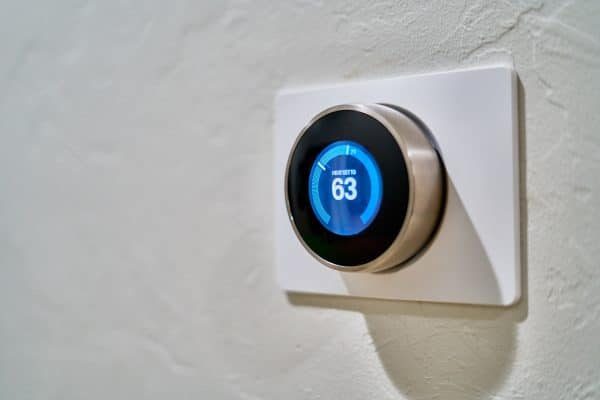Did you know you could save money if you compare energy deals with a switching service like Switchcraft or by investing in a smart thermostat? Right now, there are some really great tech-smart ways to make serious savings on your energy bills. And, if you’re not paying attention to them, you’re missing out. After all, who wants to pump more money than they need to into paying for a pricey energy deal? Energy comparison and smart thermostat research should be top of your money-saving strategy.
Making savings on your bills is easier than you think, so get started, now.
What is a smart thermostat?
With a smart thermostat, you can manage your heating remotely – and therefore more precisely. From your smartphone, your tablet or a desktop computer, you can control when your heating comes on, and to what level, and when it goes off again. So, for example, if you know you won’t be home until 7 pm – because you got stuck in traffic or dragged into a last-minute meeting – you could set the heating to come on at 6.30pm, from your smartphone.
Many smart thermostats offer zoned heating systems, with accessories for your radiators, and some offer the ability to turn your hot water on and off. Some systems also allow you to control your lighting remotely, so, if you’re away, you can turn lights on and off to make it look as though someone is home. Smart thermostats normally feature three devices – something that plugs into your boiler; a home dial or control and a smartphone app.
Some of the most popular smart thermostats on the market include British Gas' Hive, E.ON's Touch and Google's Nest smart thermostat.
Why are smart thermostats better than regular thermostats?
Sure, if you compare energy tariffs and switch to a good energy deal with a new provider, you should be making some decent savings on your bills. But why stop at comparing energy deals? You could also save money via your thermostat. Smart thermostat developers have created a product with the modern lifestyle in mind, which caters to busy individuals and families with complex routines. It’s designed to save energy and save you money.
With a regular thermostat, you control the heat in a room or a section of your house using the thermostat located in that room. A regular thermostat can usually be set to function automatically – i.e. turn the heating on at 6 pm every day. But the problem with a regular thermostat is that if you don’t conform to a regular routine – i.e. you leave and arrive back at home at different times each day – it can be hard to know when to set your heating to turn on and off.
A smart thermostat gives you the flexibility to turn your heating on and off wherever you are. Got stuck at work late and won’t be home until 9 pm? You can use the app on your phone to set your heating to come on at 8.30pm – this means you don’t waste energy heating an empty home, but you still get back to a toasty warm house at the end of the day!
Some smart thermostats can even learn your routine and adjust your heating accordingly – slightly creepy, but very useful! Some save your routine by identifying when your smartphone is in the house and some track you via GPS then turn your heating on when you get near home.
Now, that is smart.
Plus, they could save you money. You may be getting a great energy deal on your utilities thanks to your energy comparison, but, if your heating is on when it doesn’t need to be, you’re still paying more than you should be.
Are they worth the investment?
Smart thermostats are not cheap – they can cost several hundreds of pounds – but they could save you a lot of money in the long run. If you have a hectic schedule, they will certainly save you money over a thermostat which has to adhere to the same switch on and off times each day. With a smart thermostat, if you’re often away and likely to forget to turn the heating off.
Some smart thermostats also provide money-saving recommendations such as turning your heating down by one or two degrees – which could save you a surprising amount.
There are also thermostats that split your house into zones, which allows you to heat just the areas of the house you use most and save money on heating rooms that aren’t used often. Plus, if the sun pops out unexpectedly, you could also save, as some smart thermostats can adjust themselves according to the weather – seriously smart.
However, it is also worth bearing in mind the following:
Firstly, if you do have a very regular routine and are generally quite careful with your heating, then a regular thermostat may be just as good for you and you may not benefit from the flexibility a smart thermostat offers. Secondly, if you move you’ll need to buy a new system – so if you’re looking to relocate soon, it might be worth holding out.
All in all, if you’re likely to take advantage of most of the features above, a smart thermostat could be a great investment. Tado, another smart thermostat provider, estimates that its customers save around 27% on heating costs, which is around £180 a year.
Compare gas and electricity deals
We monitor the market and automatically switch you to better deals for free.
